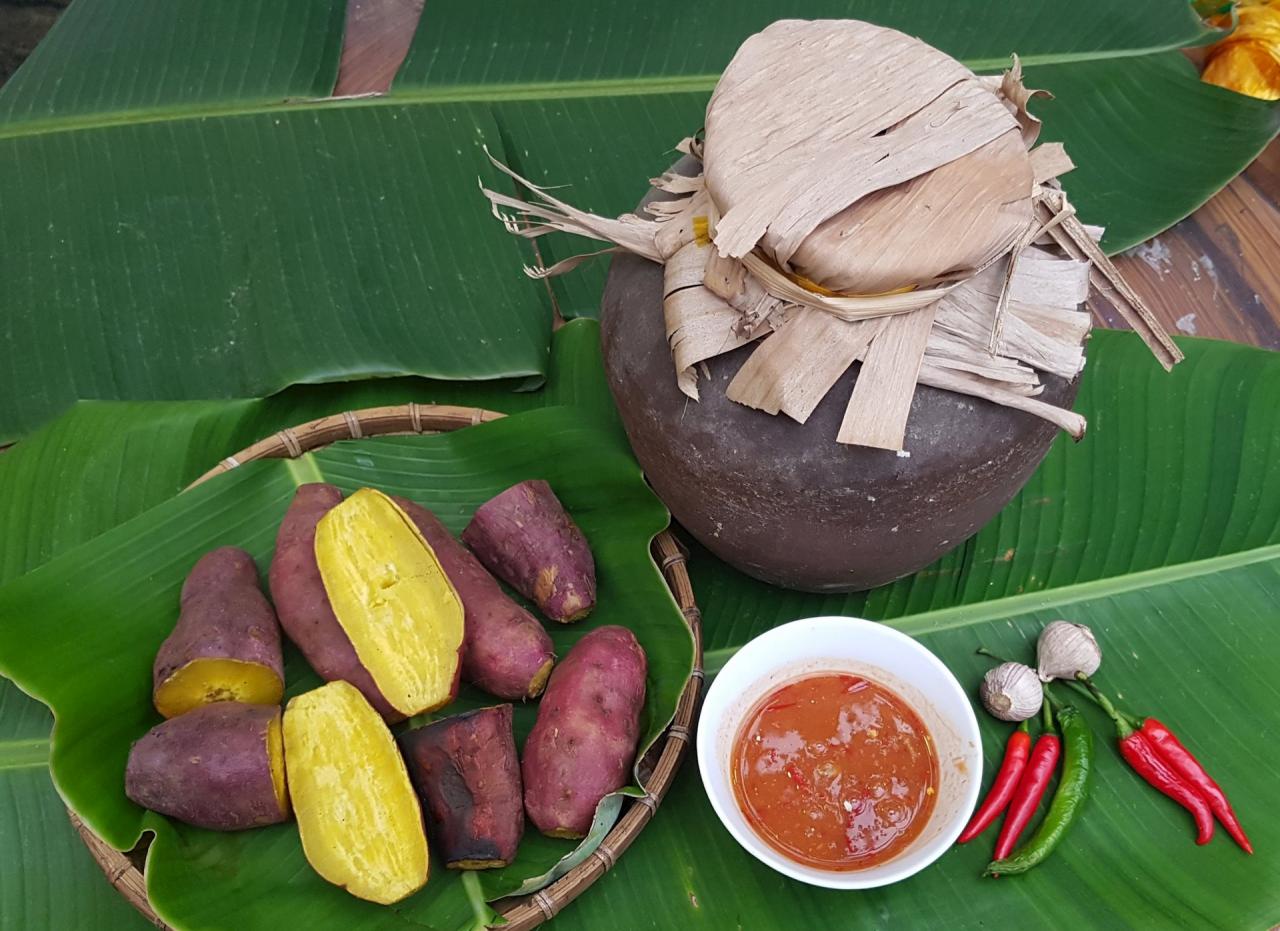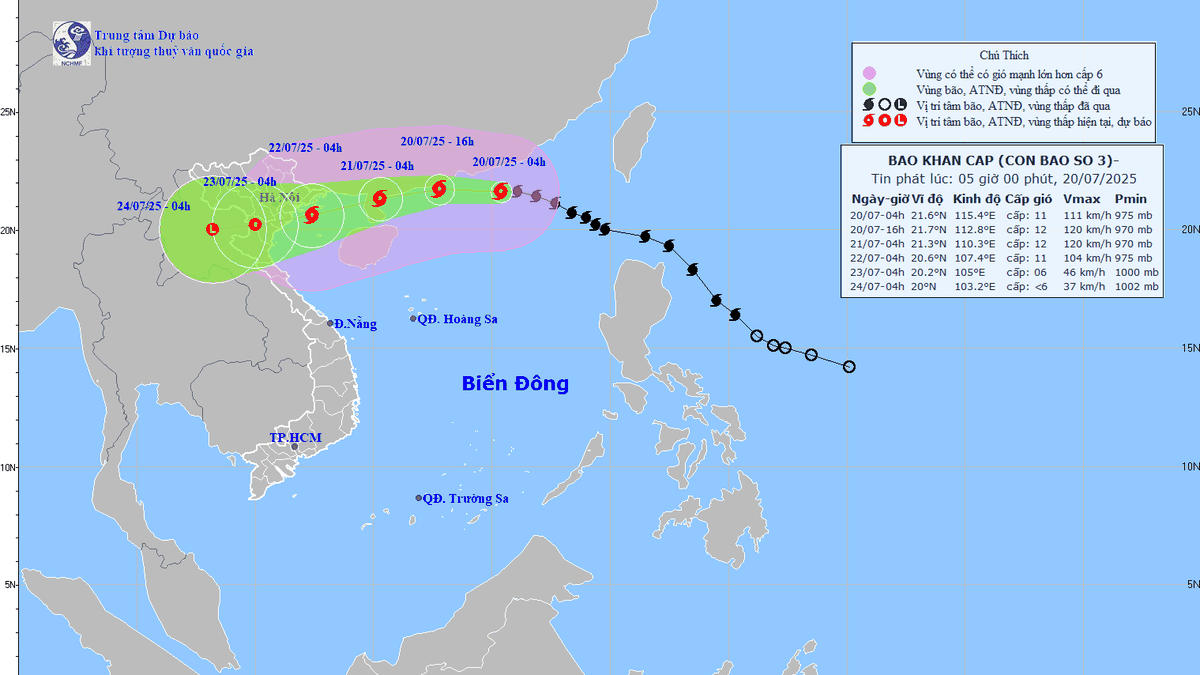
More than 20 years ago, Cam Kim commune was still an oasis. The ferry boat wobbled as it took me across the alluvial land full of sedge fields in the sunny afternoon. The sedge plants grew naturally until the fibers were old enough to be cut and used to weave mats. I walked along the wet sandy riverbank. From very small depressions in the sand, tiny “mai mai” (also written as mai mai) emerged, looking around in amazement. They looked like field crabs but were as small as chopsticks, so they looked really funny.
The south wind... hits the ground.
According to the description of local people, the crab looks like a baby crab, often living in brackish water at the end of rivers. This species has small legs, a silvery white body the size of a chopstick. Usually, people catch it when it runs ashore during shallow water.
My friend, a real Kim Bong native, seemed to say... mysteriously: "The word "squishy" in that folk song means stunted and poor. As for what "sweet potato with fish sauce" is, we'll find out in a bit."
Rows of water coconut trees swaying and reflecting on the waves. Perhaps because of its proximity to the river mouth, Kim Bong is famous for being home to many aquatic species. This has influenced the eating habits and culinary culture of the local community. The dish “mam may may” is considered a creation of this poor land surrounded by water.
In Kim Bong village, no one calls it “catching mai”, it should be called “going to catch mai” to be in the style of our hometown. When the south wind blows along the riverbank, every house prepares its tools to go catch mai. Mainly for salting and fish sauce to eat all year round. If there is any surplus, it is brought to the market to sell…
The wide mounds along the river are often where many maggots live. The way the villagers catch maggots here is also very unique! They only bring a hoe to dig a ditch, put a banana leaf trough in there to catch them, make a fence, and a large basket to hold the maggots. Every time they go further, they use a rowboat to cross the river. Each trip, the boat carries about 2-3 people.
When the water level in the river begins to dry up, revealing mounds of water, the crustaceans emerge from the ground and crawl to the water's edge. Understanding this characteristic of the tiny crustaceans, the crustacean hunter digs a trench about a hand's breadth deep, takes a banana stem, cuts it into a 1m long section, bends it, pins both ends together and places it in the trench. When the crustaceans crawl out of their burrows to drink water, they will fall into the banana stem and will not be able to crawl back up because the banana stem is slippery.
Fish sauce of hard times
The trough made from the old banana tree bark is quite elaborate. Normally, in the morning, the bananas have to be cut down, the bark separated, and bundled up to prepare for the afternoon rice milling. The Kim Bong people cut the banana bark at both ends and skillfully folded them to make the trough.
After placing the banana trough in the ditch, continue to use the split banana stalks to make a curved fence to catch the cows towards the trough. That's it, the battle plan to catch the cows is complete. All that's left is to leisurely stroke your beard and wait for the cows to fall into the trough...
Sure enough, that night, I was treated to a dish of mam may - a dish that the people of Kim Bong, Cam Kim "value more than gold". My friend also whispered: "Mam may is very rare these days, you have to run around the village to beg for that much". The whole meal for four people only had a small bowl of mam may, so everyone ate sparingly to enjoy the aroma.
Similar to making crab paste, the crab is brought home, pounded in a stone mortar and squeezed to extract the juice. Then, this mixture is put into a jar, with a little salt and chopped fresh ginger added.
Experienced fish sauce makers all believe that using rainwater to filter fish sauce will give it a particularly delicious flavor.
If you want to eat it right away, dry it in the sun for a few days or place it on the kitchen rack. After a few days, the fish sauce will be ripe and smell of golden sunlight and red fire.
If you want to keep it for a long time, bury the fish sauce deep in the ground in the corner of the garden; after two or three months, dig it up to eat gradually... Fish sauce eaten with vermicelli, steamed fish, with rice is "suffocatingly delicious", you can't even swallow it. Especially during the lean season, when there is no more rice in the barrel, the sweet potato-fish sauce-fish sauce dish is listed as a... specialty.
It seems like it has been a long time since I have been back to Cam Kim. The oasis surrounded by the Thu Bon River has now put on a tourist coat. The countryside is now prosperous and modern. The bridge across the river has made the ferry trips of the past a thing of the past.
There are too many reasons why the once-nostalgic fish sauce dish has disappeared from the culinary map of Kim Bong land of Cam Kim. When I was welcomed home to visit, my friend, now an old man, nodded regretfully: If I could find a bowl of fish sauce to eat today, I'm afraid it would be harder than... reaching heaven!
Source

































































































Comment (0)